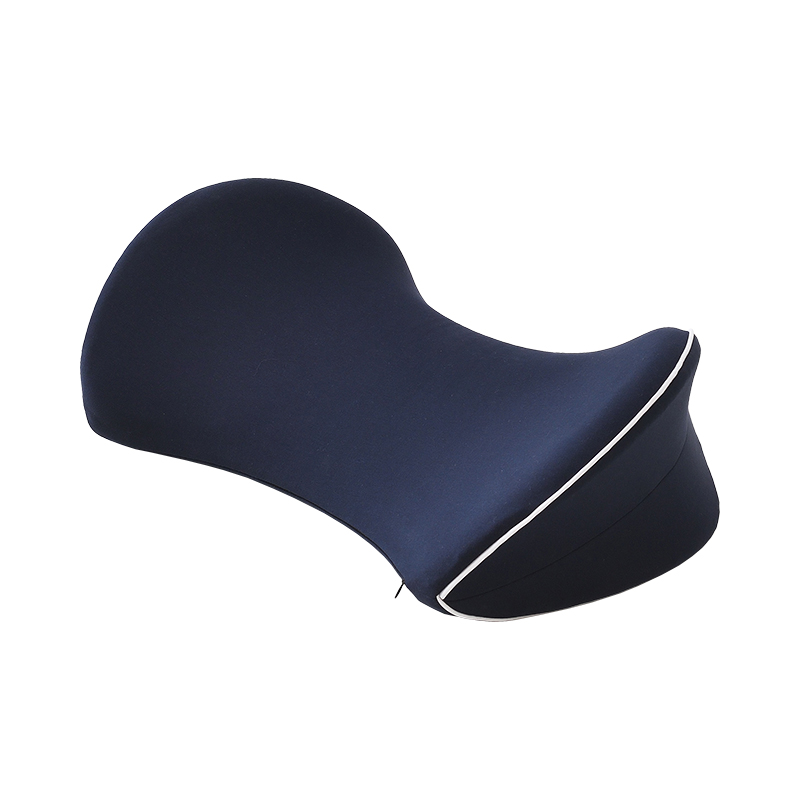When designing and manufacturing Memory Foam Back Cushions, how to achieve the best balance between support and comfort is a complex but critical issue. Memory foam is known for its unique slow rebound characteristics, which can provide personalized support based on the pressure distribution of the human body, but if it is not designed properly, it may lead to insufficient support or too stiff problems. The following is a detailed analysis and solution:
1. The core needs of support and comfort
Support
Support refers to whether the cushion can effectively relieve spinal pressure, maintain the natural physiological curve, and reduce fatigue caused by sitting for a long time. Good support performance helps users maintain a correct sitting posture and prevent excessive bending of the lumbar spine.
Comfort
Comfort is reflected in whether the cushion can adapt to the user's body shape, provide uniform pressure distribution, and avoid discomfort caused by too soft or too hard materials.
The contradiction between the two is that too soft memory foam may not provide enough support, while too hard design will sacrifice comfort. Therefore, it is necessary to find the best balance through scientific design and material selection.
2. Key methods to achieve a balance between support and comfort
(1) Optimizing the density and hardness of memory foam
Density selection
The density of memory foam directly affects its support and comfort. High-density memory foam is usually firmer and can provide better support, but may appear harder; low-density memory foam is softer but has poorer support. It is generally recommended to choose medium-to-high density (40-60 kg/m³) memory foam to balance support and comfort.
Hardness adjustment
Hardness is another key factor. The hardness can be controlled by adjusting the foaming process of the memory foam so that it is neither too soft to cause collapse nor too hard to affect comfort.
(2) Layered design
Multi-layer structure
Using a layered design can effectively balance support and comfort. For example:
Surface layer: soft memory foam
The surface layer uses low-density or gel-injected memory foam to provide a soft and comfortable feeling at initial contact.
Base layer: high-density support layer
The base layer uses high-density memory foam or polyurethane foam to provide users with stable support.
This layered design can ensure support while improving the comfort of touch.
(3) Ergonomic design
Curved fit
The shape of the cushion is designed according to the natural curve of the human spine so that it can perfectly fit the lumbar area. For example, designing a raised lumbar support area can help maintain the S-shaped curve of the spine.
Zoned support
Different densities or hardness are used in different areas of the cushion. For example, harder memory foam is used in the lumbar area to provide stronger support, while softer materials are used in the side areas to increase comfort.
(4) Improved breathability
Open cell structure
The traditional problem of memory foam is that it has poor breathability and is prone to heat accumulation. By adopting open cell structure memory foam or adding air holes, the heat dissipation performance can be significantly improved, thereby improving comfort.
Surface material selection
The outer covering material can be selected from knitted fabrics, mesh or bamboo fiber materials with strong breathability to further enhance the comfort of the cushion.
3. Technological innovation and functional upgrade
(1) Temperature control technology
Gel injection
Injecting gel particles or coatings into memory foam can effectively reduce temperature sensitivity and avoid softening of the material and loss of support due to increased body temperature.
Phase change material (PCM)
Phase change material can absorb and release heat, thereby maintaining a constant temperature on the surface of the cushion and improving comfort for long-term use.
(2) Dynamic adjustment technology
Adjustable design
Design cushions with adjustable height or angle so that users can adjust the support strength and position according to their needs.
Intelligent sensing system
High-end cushions can be integrated with pressure sensors and intelligent adjustment devices to automatically adjust the support strength according to the user's weight and sitting posture.
4. User experience optimization
(1) Personalization
Body adaptation
For people of different body shapes and heights, provide a variety of cushions in different sizes and shapes, or support fully customized production.
Scenario adaptation
Design cushions of different hardness and thickness according to the usage scenario (such as office, car or home sofa). For example, office chair cushions can focus more on support, while sofa cushions focus more on comfort.
(2) Durability and ease of maintenance
Durability testing
The long-term performance of cushions is evaluated through compression testing and fatigue testing to ensure that they can still maintain support and comfort after multiple uses.
Easy to cleanProvide a removable and machine-washable cover, which is convenient for users to clean regularly and improve the user experience.
Through scientific design and advanced technical means, cushion products that provide good support and bring ultimate comfort can be created.